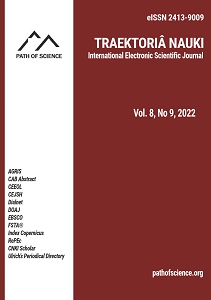Characterisation and Treatment of Automobile and Battery Water Waste Using Coagulation and Adsorption Technique
Characterisation and Treatment of Automobile and Battery Water Waste Using Coagulation and Adsorption Technique
Author(s): Anyalebechi Valentine Onwuka, Owen Chukwuebuka Abuka, Excel Obumneme Amaefule, Anyawu Solace Amarachi, Patience Ogechi Odoemelam, Chukwuebuka Okwudifele Moses, Emmanuel Chikwere Ebeh, Sandra Ijeoma Izuchukwu, Nnaemeka Chukwudi Nwachukwu, Chukwuebuka Oscar NnadiSubject(s): Energy and Environmental Studies, Health and medicine and law, Rural and urban sociology, Transport / Logistics
Published by: Altezoro, s. r. o. & Dialog
Keywords: battery and automobile wastewater; adsorbent; carbonisation; pollution; heavy metals;
Summary/Abstract: Adsorption processes have seen a broad level of usage by various researchers over the years to remove heavy metals from waste streams. An adsorbent frequently used is activated carbon. Although activated carbon is used extensively in water and wastewater industries, it remains expensive. In recent years, there has been a need for economical and safe methods for heavy metal elimination from contaminated water. This need has only grown, which gave rise to research aimed toward producing low-cost alternatives to activated carbon. There is an urgent need to explore all possible sources of inexpensive agro-based adsorbents, and heavy metal removal's feasibility should be studied in great detail. This research objective is to learn how inexpensive adsorbents can remove heavy metals from wastewater. Treating Automobile battery waste efficiently remains a significant challenge due to its enormous quantity, hazardous nature, and complexity. When effective treatment technology has poor implementation, this aggravates the situation and worsens the situation further in countries with high and rising populations. This leads to more pressures of urbanisation and industrials, giving room for more industrial waste. This research suggests the best possible options by critically reviewing the existing practices. While slow biological treatment schemes usually fail to support microbial activities in the presence of toxic components in concentrations, other physicochemical plans often need to meet strict waste disposal and discharge regulations. The approach where sludge disposal is thermally incinerated has never seen environmental justification, and this is because of dioxin release and obnoxious substances transferred directly. Newly emerging membrane-based schemes can be flexible, environmentally friendly, petite, economically self-sufficient, and easy to implement and maintain after installation.
Journal: Traektoriâ Nauki
- Issue Year: 8/2022
- Issue No: 09
- Page Range: 1030-1041
- Page Count: 12
- Language: English

